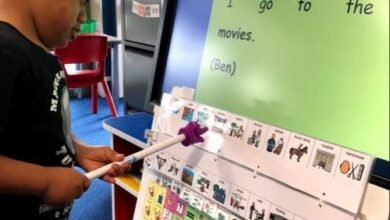Hispanic Male Educators: Representation & Impact in Education
Hispanic Male Educators: Representation & Impact in Education

Filling the Gap in Representation
Did you know that only 8% of teachers in the United States are Hispanic, compared to nearly 28% of Hispanic students in the country’s K-12 schools? The numbers are even smaller when it comes to Hispanic male educators—a stark underrepresentation that leaves a critical gap in diverse role models for students.
This disparity impacts not only Hispanic students but the broader educational landscape as well. Diverse teachers bring unique perspectives to classrooms and help foster an inclusive environment that benefits everyone. But why is there such a gap, and what can we do to bridge it?
This post explores the significance of Hispanic male educators, the challenges they face, and the actionable steps we can take to encourage more Hispanic representation in education.
Why Diversity in Education Matters
A diverse teaching workforce benefits all students, not just those from historically underrepresented backgrounds. Here’s why diversity—particularly Hispanic male educators—is so crucial in schools.
Role Models for Hispanic Students
Representation matters. Hispanic male educators provide role models who inspire and motivate Hispanic students to achieve their potential. They show that success and leadership are attainable, even in professions where Hispanics may be underrepresented. For Hispanic boys in particular, seeing someone who shares their cultural background in a position of authority and respect can be life-changing.
Bridging Cultural Gaps
Hispanic teachers often bring a deeper understanding of cultural nuances, language differences, and the unique challenges faced by Hispanic families. This helps foster better communication with Hispanic students and their parents while creating a more inclusive and understanding classroom environment.
Enriching Perspectives for All Students
Exposure to diverse educators isn’t just beneficial for minority students. It broadens perspectives for all students, helping them develop empathy, cultural awareness, and global thinking skills. Hispanic male educators bring stories, traditions, and viewpoints that enrich the curriculum in meaningful ways.
Barriers Faced by Hispanic Male Educators
If the need for Hispanic male educators is so evident, why don’t we see more of them? Several barriers contribute to the underrepresentation, from systemic challenges to personal struggles.
Recruitment Challenges
Many young Hispanic males don’t see teaching as a viable career path, often due to lack of exposure to the profession or societal expectations pushing them toward more lucrative or traditionally “male-dominated” careers.
Retention Struggles
For those who do enter the field, staying in it presents its own challenges. Hispanic male educators often feel isolated in predominantly non-Hispanic teaching environments. Without proper support systems or mentors, retention rates can suffer.
Financial Hurdles
The profession’s salary can be a deterrent. Many Hispanic males are part of multi-generational households where there’s pressure to contribute financially. The cost of teacher certification and professional development adds further financial burdens.
Stereotypes and Bias
Some Hispanic male educators face stereotypes that undermine their authority or contributions, particularly in schools lacking diverse leadership. Overcoming bias requires resilience and support, which isn’t always readily available.
Celebrating Success and Initiatives
Despite these barriers, many Hispanic male educators have not only persisted but thrived. Their stories highlight the potential for change and the importance of targeted initiatives.
Success Stories
José Luis Vilson, a math educator based in New York City, is a prominent advocate for diversity in teaching. Through his work, he has inspired countless young minds while challenging the status quo in education.
Another example is Erick Estrada, a bilingual teacher in Texas who developed programs to support English as a Second Language (ESL) students, improving their academic outcomes while creating stronger ties between schools and Hispanic communities.
Initiatives Making a Difference
Organizations like Latino Teach and Teach For America are working to close the diversity gap by providing scholarships, mentorship programs, and networking opportunities for aspiring Hispanic educators. Additionally, schools are tapping into “grow-your-own” initiatives, recruiting high school students from diverse backgrounds into future teaching pipelines.
Practical Steps for Aspiring Hispanic Male Educators
If you’re an aspiring Hispanic male educator, you play a critical role in shaping the future of education. Here are some practical tips to help you on your path.
1. Find a Mentor
Seek out experienced educators who can guide and support you. Whether they share your background or not, mentors can provide valuable advice and help you navigate challenges in the profession.
2. Explore Financial Assistance
Many scholarships and grants exist for minority teaching candidates. Look into organizations like the Hispanic Scholarship Fund or programs within your state to ease the financial burden of getting certified.
3. Engage with Your Community
Volunteering or teaching within your local Hispanic community can offer valuable experience and insights. It also builds relationships that can lead to future opportunities.
4. Join Diverse Educator Groups
There are professional networks specifically for Hispanic educators, such as The Association of Latino Administrators and Superintendents (ALAS). Joining these groups broadens your network and exposes you to resources for professional growth.
5. Advocate for Yourself and Others
Advocate for diversity in your workplace. Highlight the importance of initiatives aimed at hiring and retaining more teachers from underrepresented groups.
Building More Inclusive Classrooms
The lack of Hispanic male educators isn’t just a missed opportunity—it’s a significant hurdle to building more inclusive and equitable classrooms. By addressing recruitment, retention, and financial barriers while celebrating those who lead the way, we can create a teaching workforce that better reflects and serves the diverse student population it supports.
Actionable and focused initiatives—combined with the passion of educators like you—can turn the tide. Are you ready to make a difference in education?



